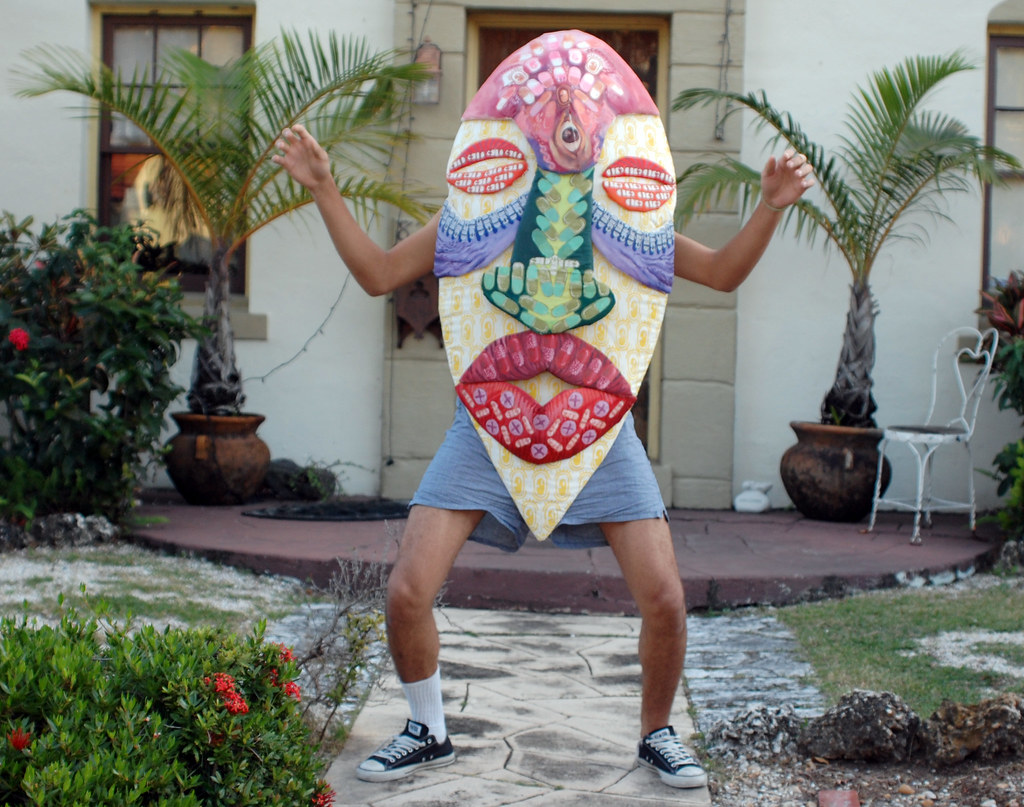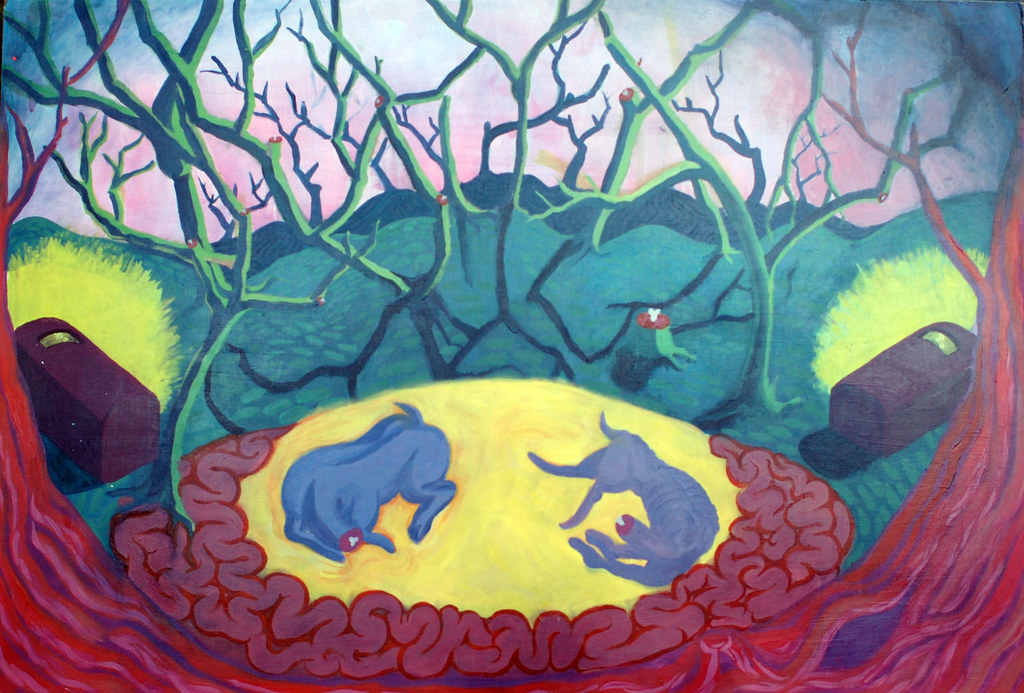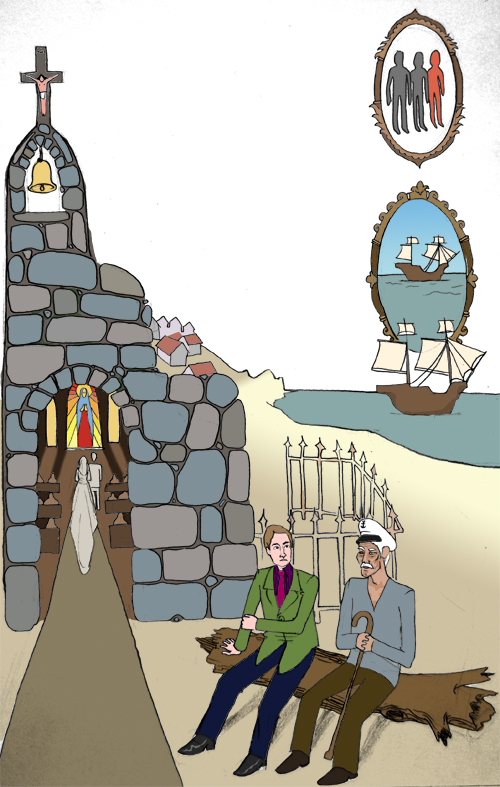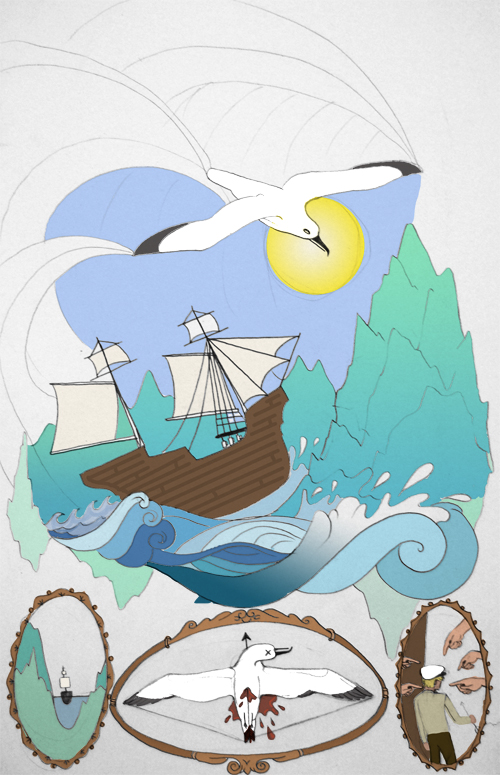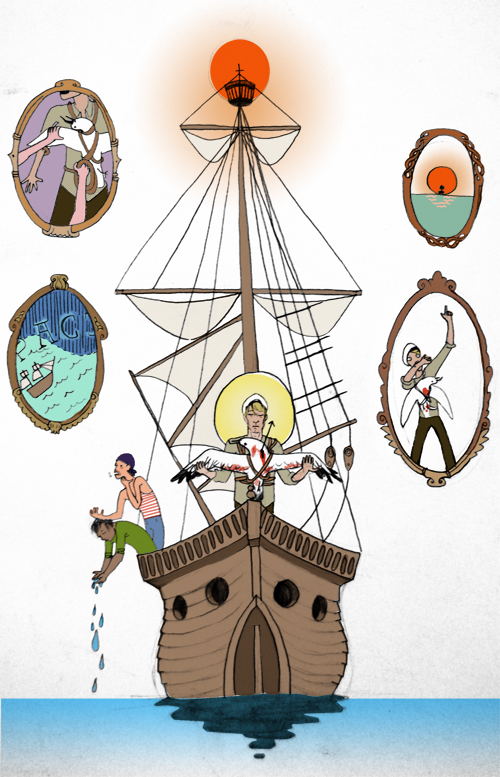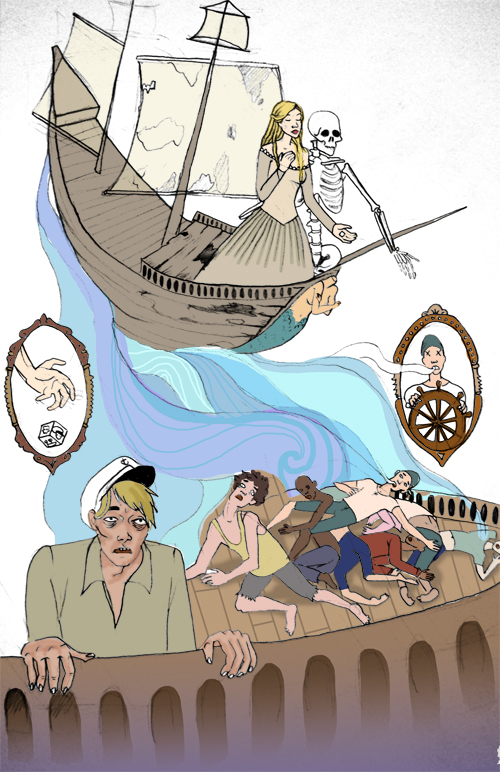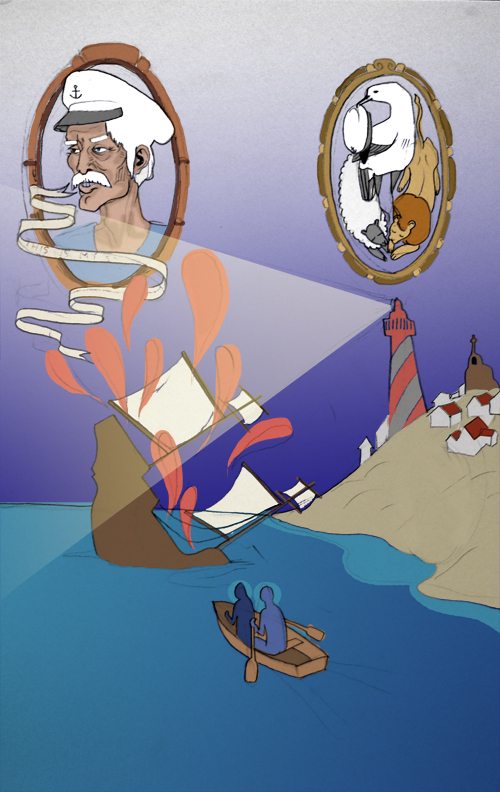
12/29/2009
12/17/2009
excerpts and illustrations
(my favorite excerpts from Rime of the Ancient Mariner, in a vaguely chronological order)
And now there came both mist and snow,
And it grew wondrous cold:
And ice, mast-high, came floating by,
As green as emerald.
And through the drifts the snowy clifts
Did send a dismal sheen:
Nor shapes of men nor beasts we ken --
The ice was all between.
The ice was here, the ice was there,
The ice was all around:
It cracked and growled, and roared and howled,
Like noises in a swound!
At length did cross an Albatross:
Thorough the fog it came;
As if it had been a Christian soul,
We hailed it in God's name.
And it grew wondrous cold:
And ice, mast-high, came floating by,
As green as emerald.
And through the drifts the snowy clifts
Did send a dismal sheen:
Nor shapes of men nor beasts we ken --
The ice was all between.
The ice was here, the ice was there,
The ice was all around:
It cracked and growled, and roared and howled,
Like noises in a swound!
At length did cross an Albatross:
Thorough the fog it came;
As if it had been a Christian soul,
We hailed it in God's name.
***
All in a hot and copper sky,
The bloody Sun, at noon,
Right up above the mast did stand,
No bigger than the Moon.
Day after day, day after day,
We stuck, nor breath nor motion;
As idle as a painted ship
Upon a painted ocean.
Water, water, every where,
And all the boards did shrink;
Water, water, every where,
Nor any drop to drink.
The very deep did rot: O Christ!
That ever this should be!
Yea, slimy things did crawl with legs
Upon the slimy sea.
The bloody Sun, at noon,
Right up above the mast did stand,
No bigger than the Moon.
Day after day, day after day,
We stuck, nor breath nor motion;
As idle as a painted ship
Upon a painted ocean.
Water, water, every where,
And all the boards did shrink;
Water, water, every where,
Nor any drop to drink.
The very deep did rot: O Christ!
That ever this should be!
Yea, slimy things did crawl with legs
Upon the slimy sea.
***
Are those her ribs through which the Sun
Did peer, as through a grate?
And is that Woman all her crew?
Is that a DEATH? and are there two?
Is DEATH that woman's mate?
Her lips were red, her looks were free,
Her locks were yellow as gold:
Her skin was as white as leprosy,
The Night-Mare LIFE-IN-DEATH was she,
Who thicks man's blood with cold.
The naked hulk alongside came,
And the twain were casting dice;
"The game is done! I've won! I've won!"
Quoth she, and whistles thrice.
The Sun's rim dips; the stars rush out:
At one stride comes the dark;
With far-heard whisper, o'er the sea.
Off shot the spectre-bark.
We listened and looked sideways up!
Fear at my heart, as at a cup,
My life-blood seemed to sip!
Did peer, as through a grate?
And is that Woman all her crew?
Is that a DEATH? and are there two?
Is DEATH that woman's mate?
Her lips were red, her looks were free,
Her locks were yellow as gold:
Her skin was as white as leprosy,
The Night-Mare LIFE-IN-DEATH was she,
Who thicks man's blood with cold.
The naked hulk alongside came,
And the twain were casting dice;
"The game is done! I've won! I've won!"
Quoth she, and whistles thrice.
The Sun's rim dips; the stars rush out:
At one stride comes the dark;
With far-heard whisper, o'er the sea.
Off shot the spectre-bark.
We listened and looked sideways up!
Fear at my heart, as at a cup,
My life-blood seemed to sip!
***
A little distance from the prow
Those crimson shadows were:
I turned my eyes upon the deck --
Oh, Christ! what saw I there!
Each corse lay flat, lifeless and flat,
And, by the holy rood!
A man all light, a seraph-man,
On every corse there stood.
This seraph band, each waved his hand:
It was a heavenly sight!
They stood as signals to the land,
Each one a lovely light:
This seraph-band, each waved his hand,
No voice did they impart --
No voice; but oh! the silence sank
Like music on my heart.
Those crimson shadows were:
I turned my eyes upon the deck --
Oh, Christ! what saw I there!
Each corse lay flat, lifeless and flat,
And, by the holy rood!
A man all light, a seraph-man,
On every corse there stood.
This seraph band, each waved his hand:
It was a heavenly sight!
They stood as signals to the land,
Each one a lovely light:
This seraph-band, each waved his hand,
No voice did they impart --
No voice; but oh! the silence sank
Like music on my heart.
ILLUSTRATING THE RIME: ART RESPONDING TO POETRY
In order to fully investigate the relationship between text and image, I have decided to take a piece of literature “Rime of the Ancient Mariner” and illustrate it in 5 images. The process of translating the rich literary imagery in Coleridge’s poem into visual art is an investigation of my personal interpretation of his work and more broadly, the struggle of illustration to portray the story being told.
For centuries, since the process of printing images was made cost-effective enough for mass-production, illustrators have worked with authors to create images that accompany stories. This relationship between author and illustrator has fascinated me since I began making art. Previous examples of literary inspiration in my work have ranged from Homer’s “Odyssey” to Kerouac’s “On the Road”. In the case of “Rime”, I was initially inspired by the numerous references to spirits and the supernatural, two subjects that I have thoroughly investigated in my personal studio practice. Incorporating my own artistic style with Coleridge’s literary sense was challenging to say the least, however, because the darkness and ephemeral nature of the poem was difficult to materialize.
Illustrating stories gives an artist the opportunity to actualize the mental pictures developed through the act of reading for other readers to see. Every reader “pictures” the figurative language of an author by interpreting it, but the illustrator must take these visions and convert them into art. In a way the illustrator works in reverse from a fine artist, perceiving first the imagery that they want to produce and then making artistic decisions of how to depict it.
Furthermore, Coleridge’s inclusion of a gloss in later editions of his work added a new graphic dimension to the poem. This series of small annotations read as a separate voice from the poems, and it was an interesting design challenge to incorporate them into the artwork. At times the gloss serves to simplify Coleridge’s nebulous descriptions, at times it only confounds the reader more. I chose to represent the gloss as a series of smaller images inside the main image, at times as a redundant voice, reiterating the story already told by the poem, sometimes providing clarity in their succinct coherence. I tried to mimic this condensed story-within-the-story with the visual sign of a frame. I also chose to emphasize the marginal nature of the gloss by placing them on the sides of the image.
Literary theorists have debated the relationship between text and image since Horace, a Roman poet, coined the term ut pictura poesis, literally “as painting, so is poetry”. He posits that poetry and painting are similarly experienced by the viewer/reader, in that they both stimulate the imagination and their effectiveness is defined by how they are interpreted. Later, the Enlightenment critic Lessing argues that these two art forms are separate, poetry existing in the temporal domain and visual arts in the spatial domain, and that one is incapable of producing the same effect as the other. The Victorian theorist Starzyk goes on to describe the relationship as paragonal, and in the case of ekphrasis, stretches the limits of both media to portray each other (Maxwell 125). It is during this time that authors such as Dickens began hiring illustrators to supplement their stories with drawings (Cohen 1). The development of the illustrated text is the focus of the visual portion of this project.
Although Lessing would say that the illustrator, as a visual artist, is restricted to the spatial domain and cannot adequately translate the text, I believe that it is possible to create artwork that validates a story and even expounds on the themes presented in the work using artistic representation. This is the primary goal of the series of paintings I have embarked upon for this project.
The results of this venture were quite successful, in my opinion. Choosing the details from the poem to incorporate into the illustration was challenging, but in the end I overestimated the amount of material I could draw from the text, resulting in only 5 drawings, rather than the 14 I originally proposed. While working, I found that Coleridge relies heavily on repetition, and illustrating each scene line-by-line did not really work well with the style I was using. The smaller quantity of images allowed me to focus on detail and was in its own way a challenge, fitting the maximum amount of meaning into each frame, and making the narrative flow as a progression evenly between frames. This was a struggle especially in the last image, because Coleridge’s ending was especially vague, arbitrarily tossing in a didactic moral lesson that does not fit with the rest of the poem; this did not seem especially odd until I tried to illustrate it. Struggles such as these lead to a deeper analysis of the poem; the process artistic response to literature has lead me to discover new ways of reading as well as providing rich inspiration for new works of art.
WORKS CITED
Cohen, Jane R. Charles Dickens and his original illustrators. Ohio State UP, 1980. Print.
Coleridge, Samuel T. Rime of the Ancient Mariner. 1900. Print.
Horace. Ars Poetica. Textbook, 2003. Print.
Lessing, Gotthold E. Laocoon. 1910. Print.
Maxwell, Richard. The Victorian illustrated book. University of Virginia, 2002. Print.
Subscribe to:
Posts (Atom)

